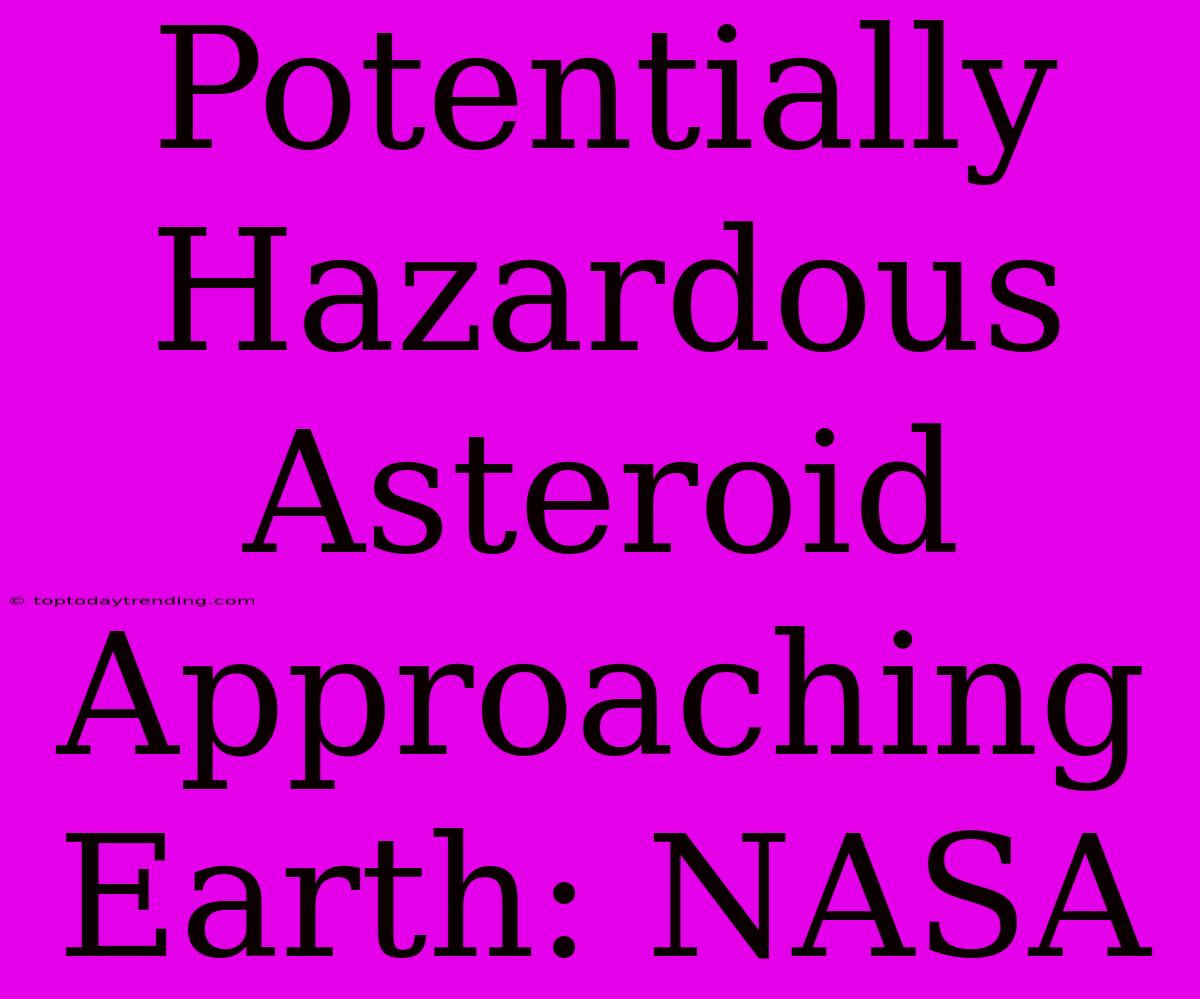Potentially Hazardous Asteroid Approaching Earth: NASA
The vast expanse of space holds countless celestial bodies, some of which pose potential threats to our planet. Among these are potentially hazardous asteroids (PHAs), objects that could come dangerously close to Earth. NASA, with its advanced technology and dedicated scientists, constantly monitors these celestial bodies, ensuring our safety and understanding of the cosmos.
What are Potentially Hazardous Asteroids?
Potentially hazardous asteroids are asteroids whose orbits bring them within 0.05 astronomical units (AU) of Earth's orbit and have a diameter larger than 140 meters. This proximity, coupled with their size, signifies a potential threat to our planet.
NASA's Role in Tracking PHAs
NASA employs various methods to detect, track, and characterize PHAs.
1. Observatories and Telescopes: Ground-based observatories and space telescopes like the Near-Earth Object Wide-field Infrared Survey Explorer (NEOWISE) and the Panoramic Survey Telescope and Rapid Response System (Pan-STARRS) continuously scan the skies for near-Earth objects.
2. Planetary Defense Coordination Office: NASA's Planetary Defense Coordination Office (PDCO) serves as a central hub for asteroid tracking and mitigation strategies. They coordinate with international partners and scientists to assess potential threats and develop plans for deflection or mitigation if needed.
3. Data Analysis and Prediction: Data from these telescopes is analyzed to determine the orbits, sizes, and compositions of PHAs. This information is used to predict future close approaches and assess potential risks.
4. Missions to Asteroids: Missions like OSIRIS-REx and Hayabusa2 have been sent to study asteroids up close, providing invaluable insights into their composition and evolution, which helps inform our understanding of potential threats.
Current PHA Activity: Recent Approaches
The news often features stories about asteroids making close approaches to Earth. While these events can seem alarming, NASA assures us that the vast majority of these objects pose no immediate threat. The agency keeps a close watch on all PHAs and issues public updates when necessary.
The Importance of Asteroid Tracking
Tracking and studying asteroids is crucial for planetary defense, ensuring the safety of Earth and its inhabitants. This knowledge helps us:
- Identify potential threats: Early detection allows for more time to develop mitigation strategies.
- Understand asteroid evolution: Studying these objects helps us understand their origins and compositions, providing crucial information about the early Solar System.
- Prepare for future encounters: Knowing the nature of these objects helps us prepare for potential future encounters, ensuring humanity's survival.
Conclusion
NASA's constant vigilance and tireless efforts in tracking and characterizing potentially hazardous asteroids are essential for ensuring our planet's safety. Their work provides valuable insights into the universe and protects us from the potential dangers posed by celestial objects. As we continue to explore the cosmos, understanding and mitigating these threats remains a top priority for humanity.

